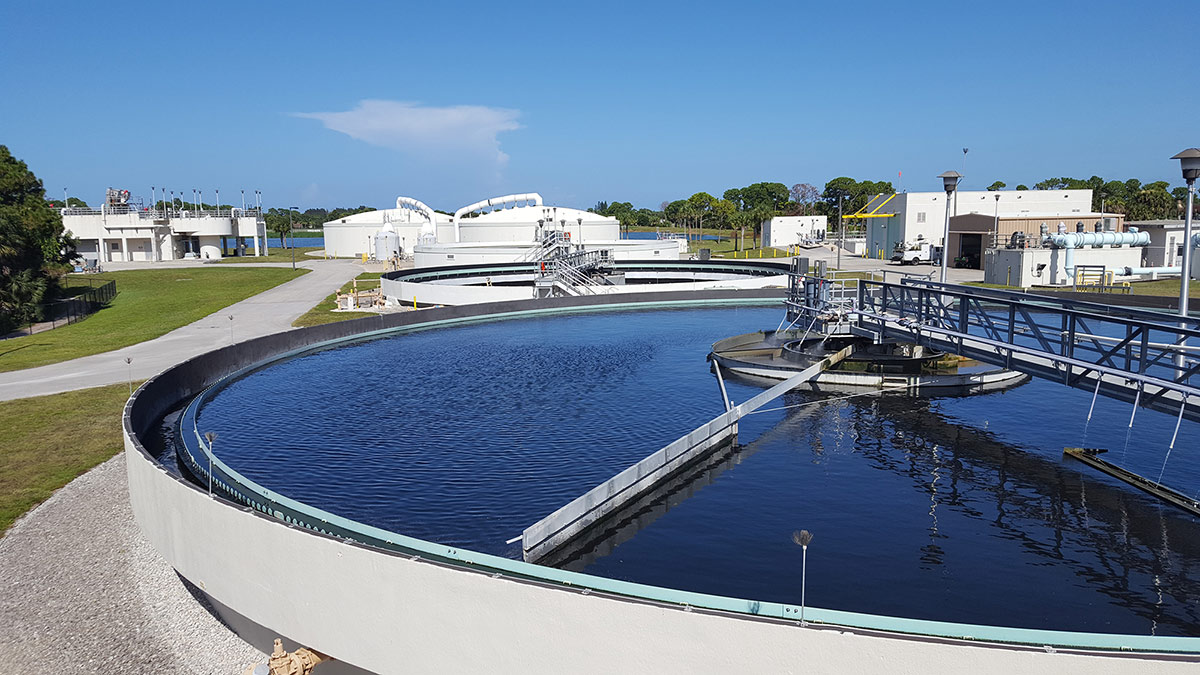Efficient Waste Water Treatment Systems: Trick Methods and Advantages
Efficient Waste Water Treatment Systems: Trick Methods and Advantages
Blog Article
Strategic Approaches to Boost Waste Water Treatment Performance and Minimize Ecological Influence
In the realm of waste water therapy, the pursuit for boosted performance and reduced environmental influence is a continuous difficulty that requires calculated solutions. The integration of advanced treatment technologies, energy-efficient processes, source recuperation approaches, boosted nutrient elimination strategies, and smart monitoring and control systems represents a diverse structure for dealing with these pressing issues.
Advanced Treatment Technologies
Cutting-edge membrane layer purification systems have actually changed innovative wastewater therapy processes, substantially boosting the elimination of impurities. This technology has actually shown to be very effective in getting rid of a large range of contaminants, including pharmaceuticals, heavy metals, and organic compounds, which are often testing to eliminate through traditional therapy techniques.
Additionally, membrane layer filtering systems offer numerous advantages over traditional therapy methods. Furthermore, these systems are extremely flexible and can be conveniently integrated into existing therapy plants or used as standalone units for decentralized applications.
Energy-Efficient Processes
The combination of energy-efficient processes in wastewater treatment systems is essential for enhancing resource application and lowering operational expenses. By applying energy-efficient innovations, therapy plants can considerably reduce their carbon impact and total ecological influence. One key approach to boosting energy effectiveness in wastewater therapy is the usage of innovative aeration systems, such as great bubble diffusers or surface area aerators, which can enhance oxygen transfer efficiency and minimize power consumption. In addition, including energy recuperation systems, like anaerobic food digestion for biogas production or utilizing excess warm for thermal procedures, can aid balance out power needs and promote sustainability.
In addition, maximizing procedure control and automation with using sophisticated sensing units and keeping an eye on systems can enhance overall power performance by readjusting procedures in real-time based on actual demand and conditions. Carrying out energy audits and regularly monitoring energy performance indicators are vital practices to determine areas for enhancement and track energy-saving initiatives effectively. On the whole, the fostering of energy-efficient procedures in wastewater therapy not only profits the atmosphere but likewise contributes to long-lasting cost savings and functional sustainability.
Source Recovery Strategies
With a focus on enhancing source usage and sustainability in wastewater treatment systems, the execution of source recuperation strategies emerges as a critical facet in boosting functional effectiveness. Source healing strategies in wastewater treatment entail the recognition and removal of valuable sources from the waste stream, thus transforming what was once considered waste into a beneficial possession. By executing resource recuperation methods such as nutrient elimination and recovery, energy generation from natural matter, and the production of multiple-use water, wastewater treatment plants can lessen environmental impact while making the most of performance.

Improved Nutrient Elimination Strategies
Applying advanced nutrient elimination techniques is crucial for optimizing the efficiency of wastewater treatment systems. Improved nutrient elimination plays an essential function in lessening the ecological impact of treated effluent released right into water bodies. One of the essential techniques used for enhanced nutrient removal is the process of organic nutrient removal (BNR), which includes the additional reading elimination of nitrogen and phosphorus through organic procedures. This can be achieved with making use of specialized bacteria that can convert nitrogen compounds into inert nitrogen gas with denitrification, and accumulate phosphorus within their cells with a procedure called enhanced biological phosphorus removal (EBPR)

In enhancement to BNR, progressed treatment approaches such as membrane bioreactors (MBRs) and built marshes can additionally be utilized to enhance nutrient elimination efficiency. By incorporating these innovative nutrient elimination strategies right into wastewater treatment systems, towns and industries can efficiently minimize nutrient pollution and safeguard the atmosphere.
Smart Monitoring and Control Equipment
Making use of innovative modern technology, the assimilation of wise monitoring and control systems reinvents the functional effectiveness of wastewater therapy facilities. These systems incorporate innovative sensors and information analytics to constantly keep an eye on vital specifications such as pH levels, turbidity, dissolved oxygen, and flow rates in real-time. By accumulating and analyzing this data, drivers can acquire valuable understandings right into the performance of the treatment procedures, making it my site possible for positive changes to maximize treatment performance.
Smart tracking and control systems also support remote surveillance capabilities, permitting operators to access real-time data and control features from off-site locations. This remote accessibility enhances operational flexibility and responsiveness, making it possible for speedy treatments in situation of system breakdowns or fluctuations in influent top quality. Moreover, the predictive upkeep capacities of these systems aid avoid equipment failures and reduce downtime, eventually enhancing the total reliability of wastewater therapy operations (Waste Water Treatment).
Verdict
Finally, critical methods such as sophisticated treatment modern technologies, energy-efficient processes, source healing approaches, boosted nutrient elimination strategies, and smart surveillance and control systems play an important role in improving wastewater therapy effectiveness and decreasing ecological impact. By carrying out these methods, wastewater treatment plants can boost their total efficiency, minimize energy usage, recuperate valuable resources, and make certain compliance with environmental policies. These strategies are necessary for sustainable and effective wastewater management practices.
In conclusion, critical techniques such as sophisticated therapy technologies, energy-efficient processes, resource healing methods, improved nutrient removal techniques, and smart monitoring and control systems play a crucial duty in enhancing wastewater treatment performance and reducing environmental impact.
Report this page